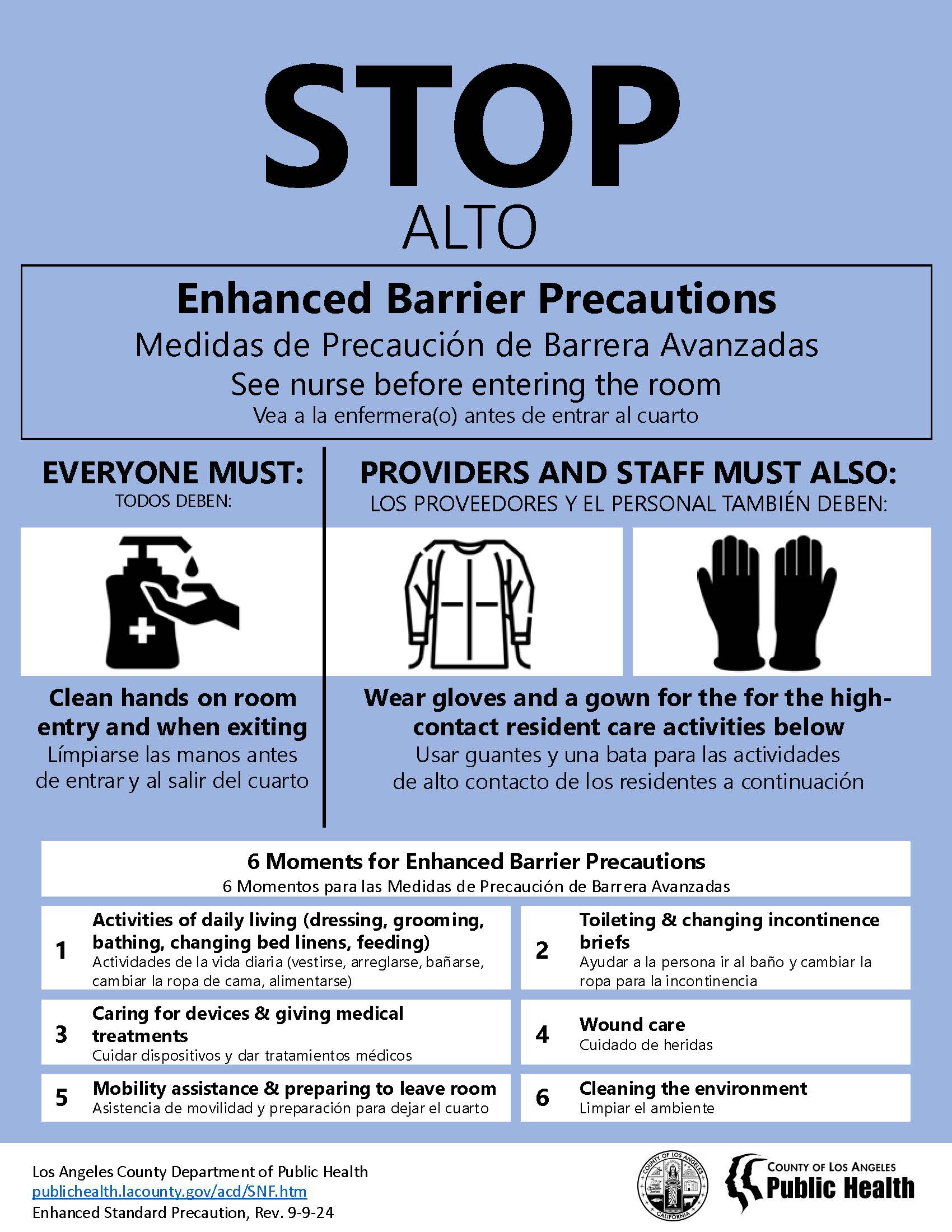
Page 1
(8 1/2'' x 11)
English/Spanish |
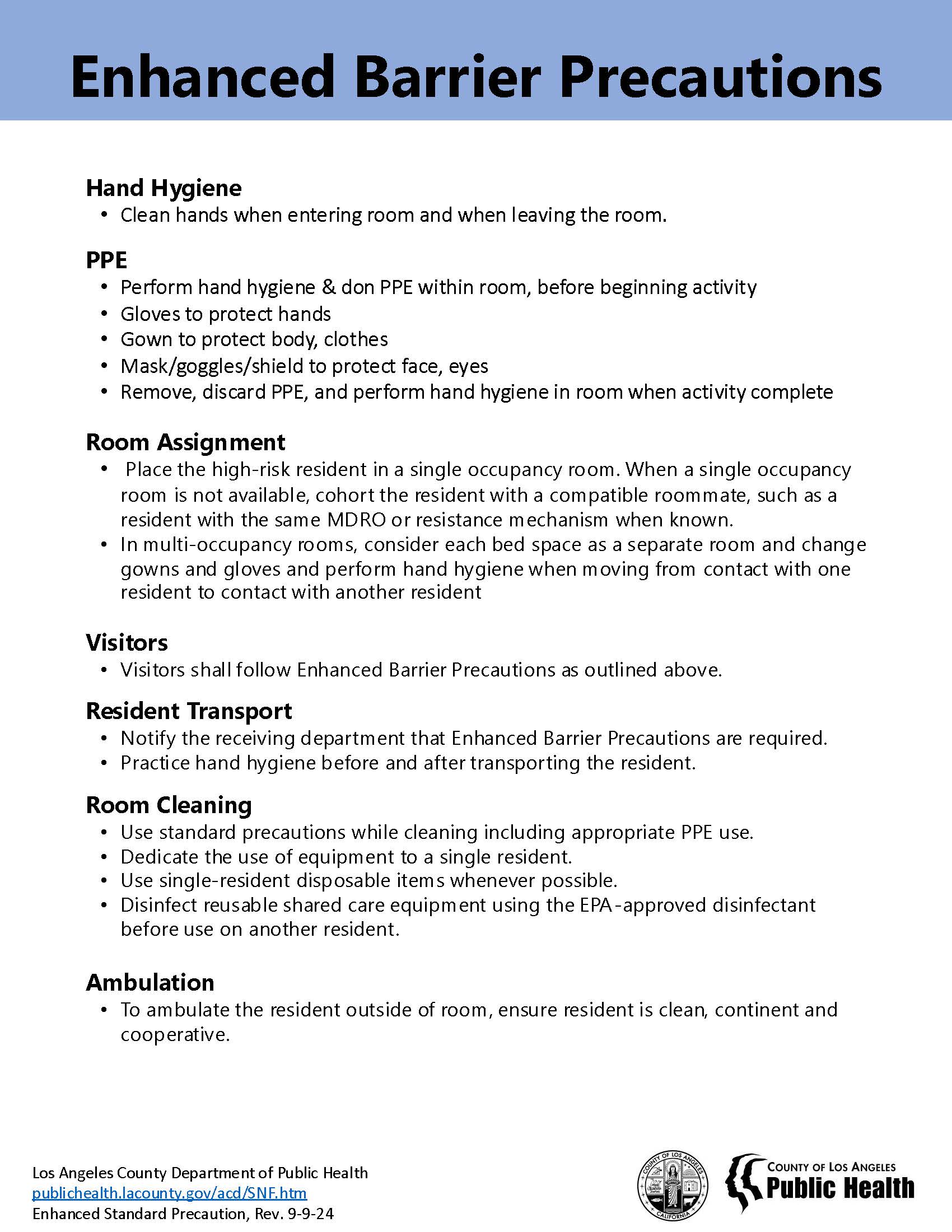
Page 2
(8 1/2'' x 11)
English / Spanish
(pending) |
These precautions should be used during
high contact care for residents with high risk
characteristics for MDRO colonization and transmission, even
if MDRO status is unknown:
- Presence of indwelling devices (e.g. urinary catheter, feeding tube, endotracheal or tracheostomy tube, vascular catheters)
- Wounds, or pressure ulcer (unhealed)
This would include all residents in a
subacute unit.
|
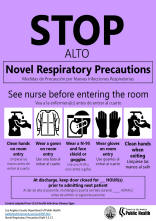
Page 1
(8 1/2'' x 11)
English/Spanish |
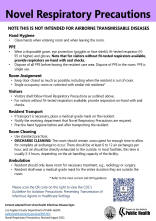
Page 2
(8 1/2'' x 11)
English / Spanish
(pending) |
These precautions should be used for patients known or suspected
to be infected with novel respiratory pathogens such as, but
not limited to: COVID-19
|
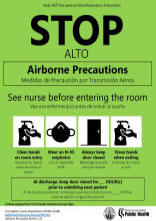
Page 1
(8 1/2'' x 11)
English/Spanish |
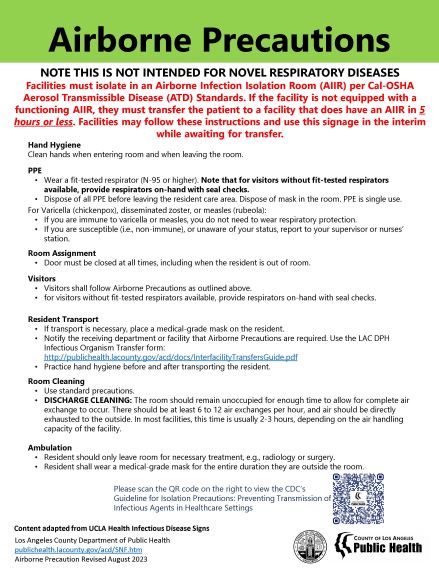
Page 2
(8 1/2'' x 11)
English / Spanish (pending) |
These precautions should be used to prevent transmission of airborne infectious agents
that remain infectious over long distances such as, but not limited to: Measles
(Rubeola), Tuberculosis, Chickenpox (Varicella virus) |
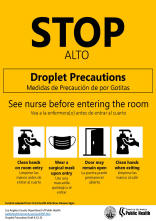
Page 1
(8 1/2'' x 11)
English/Spanish |
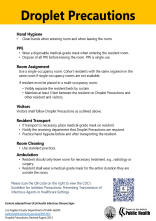
Page 2
(8 1/2'' x 11)
English / Spanish
(pending) |
These precautions should be used to prevent transmission of pathogens spread
through respiratory droplets or secretions such as, but not
limited to: Influenza,
Meningitis due to Haemophilus Influenza type B
whether known or suspected, Meningococcal disease (caused by
Neisseria meningitidis) including meningitis |
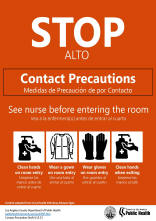
Page 1
(8 1/2'' x 11)
English/Spanish |
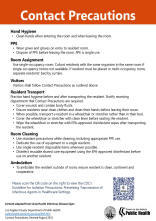
Page 2
(8 1/2'' x 11)
English / Spanish
(pending) |
These precautions should
be used to help prevent the spread of infectious agents that spread by direct or indirect
contact with a resident or a residentís environment such
as, but not limited to: Hepatitis (Type A), scabies, skin
abscesses with heavy drainage
(until drainage stops), diarrhea (not C. diff), and
certain multi-drug resistant organisms (MDROs)
|
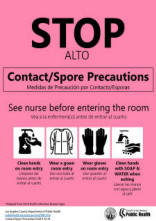
Page 1
(8 1/2'' x 11)
English/Spanish |
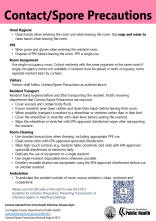
Page 2
(8 1/2'' x 11)
English / Spanish
(pending) |
These precautions should be used to help prevent transmission of particular spore-producing infectious agents which are spread by direct or indirect contact with patient or the patientís environment. The preferred hand hygiene method for these precautions is Alcohol Based Hand Rub (ABHR). However, if hands are visibly soiled or if you are performing care for patient with suspected or confirmed C. difficile or norovirus, the preferred method of hand hygiene is soap and water. |













